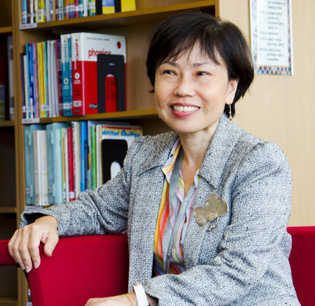Why Singapore’s English Teachers Should Embrace Singlish, Not Fight It
Is it time for Singaporean educators to embrace Singlish as a legitimate learning tool? What the Research […]
Read More
Developing self-directed and independent learners is the goal of teaching today as these are important 21st century skills. Master Teacher June Wong tells us how we can teach strategically to enhance learning.
During her early teaching years, the classroom was quite different. “Back then it was always teacher talk, always teachers dishing out everything,” June recalls. “The teacher was the dispenser of knowledge.”
But those days are over. “Nowadays, when you go into the classroom, the teachers are also learning along together with the students,” she notes.

June taught in schools for about 30 years before she became a Master Teacher. She often has conversations with teachers to find out about their training needs and conducts workshops to address those needs.
A question she often gets is: What do you coach beginning teachers on?
“Questioning techniques are very important for them,” says June. There is a tendency for beginning teachers to “give everything to the students”, she observes.
But questioning techniques are just as essential for experienced teachers, to know when to pause at strategic points and pose the right questions to stimulate critical and productive thinking. In this way, students stay engaged and focused in generative discussions.
Students are now active partners. “When students become more self-directed, they are able to pose their own questions and become responsible for their own learning. We also have to create opportunities for them to work in teams, so students become collaborative learners as well.”
These skills are particularly relevant in the Science classroom. “In Science, it’s a lot about inquiry – you ask a lot of questions. That will drive them to want to learn, to investigate.”
That’s not all. Students need to apply what they’ve learned to new situations. For example, after students have done research on deep-sea creatures, they can then be tasked to create their own creatures, applying the principles of adaptation.
While we want to encourage more self-directed learning, June cautions against leaving the learning entirely up to the students. To her, that’s not self-directed learning.
“There is a time for teaching,” she explains. There are times when we still have to teach certain concepts up front. This is usually foundational knowledge that students need to fall back on and build upon as they navigate the learning process.
We can think of the learning process as a series of tasks that slowly build up their capacity to do the final task.
While the pedagogy changes, the way we assess must also change.
Another important aspect of teaching is assessment. “While the pedagogy changes, the way we assess must also change,” June points out.
“We don’t wait until the end and give students a summative test. Along the way, we give them feedback so that they can grow.”
To facilitate growth, many teachers today use assessment for learning. Teachers can provide timely feedback throughout the learning process to guide them, and to help them know how they’re doing.
Teachers can also give more detailed feedback rather than good, bad or poor, advises June. “Students will not know exactly where they’ve gone wrong otherwise.”
As a mentor of teachers, June believes that teachers themselves need feedback. It can come from anyone, be it students or colleagues.
Being open to feedback paves the way to more learning. Constructive feedback also encourages teachers to look for alternatives that can improve their practice.
June suggests that teachers work together as a team so that they do not feel so alone. One good way for teachers to learn together is to try out a new pedagogy.
“For teachers, learning is not just about going to workshops, or going for a course,” she explains. “They can engage each other within their school, or within their department. They can work together and learn together as a team.”
Just like their students, teachers can benefit from collaborative learning. They can come together to discuss what went well and what didn’t after trying a new approach. “There’s a lot of learning that way,” she says.
She gives another example of doing a literature review together. “When you work together as a team, different people do different parts. You share the load of reading, and then you come together and share, and that sharing becomes very rich.”
And teachers should continue to learn, because the work they do in the classrooms continues to be vital. As June sums it up: “The teacher factor is very, very important – to be there at the right time and at the right point, to guide the learning.”